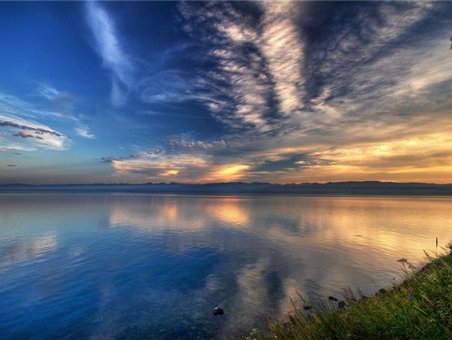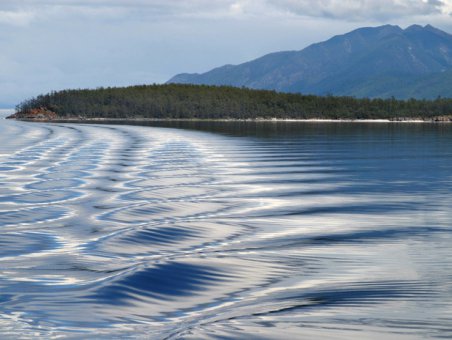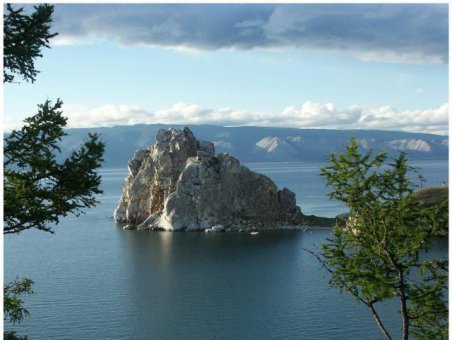Lakes are one of the natural wonders of our planet. Once upon a time, reservoirs formed in natural depressions, which now store two-thirds of the planet’s total fresh water supply. Some lakes are so huge in size that they are even called seas. And the depth of these water bodies is such that many seas can only envy.
The editors of Eurasia Open invite you to get acquainted with the Top 10 deepest lakes in Eurasia, which will amaze with their natural beauty and grandeur.
10. Como Italy
Lake Como is the third largest lake in Italy and one of the deepest in Europe. Its depth reaches 410 meters. Como is home to the homes of celebrities such as Madonna, Matthew Bellamy, Sylvester Stallone, Ronaldinho and many others.
In addition to its clear waters, the lake’s special beauty is given by the picturesque mountains surrounding Como: from the south they reach a height of 600 meters, and this area is often called the Larian Triangle; in the north the pre-alpine territory begins, and mountains more than 2 kilometers high are already visible here.
9. Tazawa Japan
Lake Tazawa is an endorheic crater lake in Japan.
The reservoir is located in the city of Semboku. The depth of the lake reaches 424 meters, making it the deepest lake in the country and one of the deepest in Eurasia. The bottom is located below sea level. The water itself is very transparent and sometimes its visibility reaches 30 m.
On the shores of the lake there is a resort with hot springs, which is very popular in the country. There are several ski resorts around Tazawa, so tourists visit the area all year round. The lake's waters are home to salmon Oncorhynchus kawamurae, which was previously considered extinct.
8. Van Türkiye
Lake Van is an endorheic salt lake located on the Armenian Highlands in the eastern part of modern Turkey. It is the largest soda lake in the world. Its depth is 451 meters.
The Lake Van area is famous for a rare breed of cat, the Turkish Van, which, unlike most cat breeds, loves to swim in water.
7. Tannja Norway
Lake Tannja (Tinnsjø) is one of the largest lakes in Norway, and one of the deepest in Europe.
It is located between the municipalities of Tinn and Notodden in the county of Telemark. The depth of this lake is 460 meters.
6. Mjosa Norway
Lake Mjosa is considered another deepest lake in Norway and all of Eurasia. Located in southern Norway, approximately 100 km north of the country's capital. Its depth reaches 468 meters.
The PS Skibladner operating on the lake is the oldest steamship in service in the world. It was built in 1856.
5. Lake Sarez Tajikistan
Lake Sarez is located on the Pamir mountain system. It arose as a result of a strong earthquake. Lake Sarez stretches almost 60 kilometers in length, its depth is approximately 500 meters.
This place is called the pearl of the Pamir Mountains because it has an unusually beautiful view.
4. Hornindalsvatnet Norway
Lake Hornindalsvatnet is the deepest lake in Norway, bypassing lakes Mjøsa and Tannja. The depth of Hornindalsvatnet is 514 meters.
No glacier-fed rivers flow into the lake, so its water is one of the cleanest in all of Scandinavia. Activities on Hornindalsvatnet include swimming, rowing and fishing.
3. Issyk-Kul Kyrgyzstan
Lake Issyk-Kul is the largest in Kyrgyzstan. It is drainless and one of the three largest lakes in Eurasia with its depth of 702 meters.
In addition to the mild climate, mountain air and healing bright blue water, the lake attracts tourists with its golden beaches, hot mineral springs and healing mud.
2. Caspian Sea
The Caspian Sea is the largest enclosed body of water on Earth, which can even be classified as a full-fledged sea, due to its size and oceanic-type crust. The area of the lake is about 371 thousand km², and its maximum depth is 1025 meters.
101 species of fish are registered in the Caspian Sea, where most of the world's sturgeon stocks are concentrated, as well as freshwater fish such as roach, carp, and pike perch.
1. Baikal Russia
Lake Baikal is the absolute record holder of this top. This is the deepest lake on the Planet, reaching a depth of 1642 meters. Located in the south of Eastern Siberia, the reservoir is the largest natural reservoir of fresh water - it stores 20% of the total supply of surface fresh water on the planet.
Baikal is also known as the oldest lake on Earth, formed 25-35 million years ago, although lakes usually do not exist for more than 15 thousand years. Baikal is a unique ecosystem; about 1,700 species of flora and fauna live here, many of which are found nowhere else. The lake is listed as a UNESCO World Heritage Site.
Names of the Caspian Sea
There is more than one world geographic “record holder” in Eurasia. Moreover, many of them are located on the territory of Russia or in one way or another adjacent to it. Amazing facts about these objects are very worthy of attention.
If you ask any of your compatriots to name the largest lake in Eurasia, most of them will probably first think of Baikal. However, such ideas are not entirely correct. However, it is clearly necessary to make a number of reservations here.
The largest hydronym of this type in terms of area is proudly called the Caspian Sea due to its size. In addition, the structure of its bottom is similar to that found in the world's oceans. However, in fact the Caspian Sea, in different times among various peoples, called the Hyrcanian, Khvalynsky (Khvalissky), Abeskunsky, Khazar, Derbent, Dzhurdzhansky Sea and Sikhai, remains a lake - by the way, the largest in area among not only its Eurasian “brothers”, but also on the planet. Currently it extends over more than 371 thousand square kilometers.
Facts about the Caspian Sea

The Caspian Sea is unique in that salinity differs in different areas. For example, in the north it is less than a tenth of a percent (about 0.5%), and in the southeast it reaches eleven to thirteen percent.
Five states reach the Caspian shores, which stretch for approximately 6,700 kilometers (and if you count the islands, then all 7,000 kilometers). In addition to Russia, these are Kazakhstan, Azerbaijan, Turkmenistan and Iran. They have access to the commercial development of sturgeon stocks concentrated in local waters (by the way, most of their global number) - primarily the largest of them, beluga - as well as carp, mullet, pike, bream, salmon, etc. Fauna of the Caspian Sea is very diverse and includes almost two thousand species. One of the endangered mammals, the Caspian seal, also lives here.
Another lake - Baikal
Main factor, affecting the number of all types of vegetation and animals in the basin of the above-mentioned lake, is the pollution of its waters as a result of human industrial activity (in particular, due to oil production).

There is another large lake in Eurasia - Baikal, located entirely on Russian lands, in Buryatia and Irkutsk region. Although it is inferior to the Caspian in area (since it occupies only 31,722 square kilometers - if you do not take into account the islands), it is considered the largest source of fresh water on the continent. By the way, it contains about twenty percent of its world reserves.
In terms of depth, Baikal has no equal among similar reservoirs. The greatest distance from its surface to the very bottom is over 1.6 kilometers. The total length of its coast line is 2100 km. In terms of the volume of water reserves (more than 23 thousand cubic meters), this lake holds second place on the planet, second only to the Caspian Sea.
More than three hundred streams, rivers and rivulets of various sizes flow into Baikal, and only one flows out - the Angara (which is associated with the local legend about a girl who ran away from her stern father to her beloved Yenisei).

Sevan is considered the largest alpine lake in Eurasia - the only guaranteed source in Armenia fresh water. True, its area is many times smaller than that of Baikal and even more so of the Caspian Sea and is only about 1240 square kilometers, and the greatest depth does not reach even a hundred meters.
Such unique wealth inspires clear thoughts that it would be a great sin to squander it. Preserving what nature gives with such generosity is the main task for those powers on whose territory all these lakes are located.
Lakes in Eurasia are distributed very unevenly. The largest of them were concentrated, oddly enough, not in humid, but in arid areas. These are residual lakes, preserved on the site of ancient large reservoirs that existed in a wetter era.
These include Caspian And Aral sea-lake (Fig. 186), as well as lakes Balkhash, Elton, Baskunchak and etc.
The Caspian Sea is larger in size than any lake in the world. The depth of the Caspian Sea is also striking, in places exceeding 1000 m. During storms, waves up to 15–17 m high are formed on this lake. The salinity of its waters is 12–13‰.
Residual lakes are usually shallow and saline, their sizes vary depending on the time of year. During the dry season, many of them may disappear altogether, leaving behind only a salt crust. But Lop Nor is called a traveler lake, since it often changes its location, area and outline.
Much deeper lakes fill tectonic depressions, such as Baikal (Fig. 187) and Dead Sea. They are in the cracks earth's crust. The Dead Sea lies 395 m below sea level. Its coast is the lowest dry land on the planet, and Baikal is the deepest (1620 m) lake on Earth. The Dead Sea is closed and therefore one of the saltiest lakes in the world (260-270‰). Baikal, on the contrary, is a waste lake and one of the cleanest on the planet. The lake holds as much water as the Baltic Sea, and this makes up a fifth of the Earth’s fresh water (without glaciers).
Often, lake basins of tectonic origin are deepened by a glacier over time. This is how glacial-tectonic lakes are formed, among which are the famous European lakes - Ladoga And Onega. There are many small volcanic lakes on the Pacific islands of Eurasia. In the mountainous regions of the mainland, dammed lakes formed by mountain landslides are often found. Some of them reach the depths of the sea. For example, depth Sarezsky lakes in the Pamirs is 520 m. Estuary lakes have formed at the mouths of many rivers, in particular the largest lake in Ukraine Yalpug. In East and Southeast Asia, floodplain lakes are especially numerous. There are also karst lakes in Eurasia, among them the Ukrainian pearl - Svityaz.
There are a lot of lakes of glacial origin in areas that were once covered by a glacier. An example is Finland, which is called the land of a thousand lakes. However, the world's largest network of lakes formed on the mainland in places where permafrost melted. Material from the site
Permafrost. Permafrost, which is a kind of legacy of recent eras of climate cooling, is a thickness of frozen rocks several hundred meters deep. Only in summer does the thin top layer of soil thaw. In Eurasia, the permafrost zone covers a significant part of Northern and Eastern Asia, as well as certain areas of Central Asia.
Permafrost complicates construction. At the same time, she helped preserve for scientists the fossil remains of mammoths and other ancient animals and plants.
- IN Eurasia are the largest residual and deepest tectonic lakes, there are also numerous lakes formed in permafrost areas.
- Eurasia - owner of the world's largest array permafrost.
